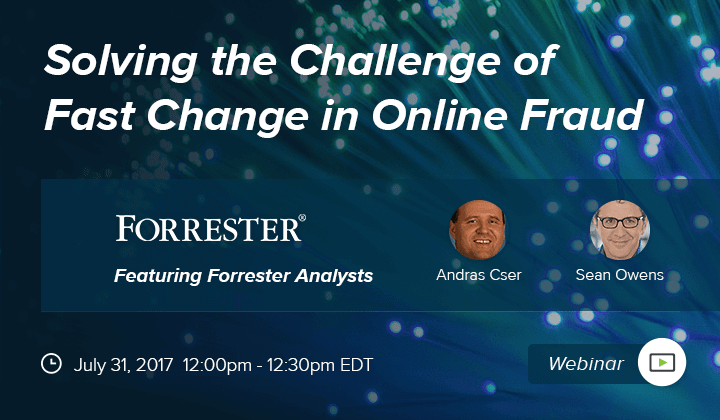There’s nothing more important in ecommerce than the ability to adapt quickly. The needs and demands of both your customers and your business change all the time, and to stay competitive a company needs to be able to keep up. The trouble is, when so much changes, it can be difficult to stay up to date with everything you need to know – something we often see in retailers looking for ecommerce fraud protection solutions.
Even Good Changes Can Be Confusing
The options available in online fraud prevention have changed dramatically over the last 5 years – and they’ve changed for the better. It’s now possible to be far more accurate, stopping fraud far more effectively and avoiding false positives far more reliably. Chargeback guarantees remove much of the fear and cost of fraud. It’s also now possible to make online fraud prevention invisible to the end user, so that your customers are never interrupted or delayed by fraud considerations.
All of this is good, but the developments have happened so swiftly that many merchants find themselves in a position where they know that they’re probably missing something for their website but aren’t quite sure what questions they ought to be asking or what they ought to be looking for. You may be aware that things have been shifting, but do you know how?
This is the question that Andras Cser, Vice President and Principal Analyst at Forrester, will be answering during the webinar “Solving the Challenge of Fast Change in Online Fraud”. He’ll discuss the way that technology has transformed this area and what that means for retailers searching for ecommerce fraud protection.
Fraud Is Changing
Fraudsters are moving faster than ever, which makes sense when you realize that their success is dependent on their being able to trick merchants and their systems into allowing theft. Criminals are always incentivized to be creative, to try new things and use new technologies. And they’re not held back by the need to conform to rules or security standards.
There are a range of factors that have changed the face of online fraud in recent years. The U.S. adoption of EMV has had the expected effect, driving fraudsters who used to target card present to the online ecosystem. Numerous data breaches have flooded the criminal marketplace with cheap, easily accessible stolen data and made ATO (account takeover) even easier.
Technology can be leveraged for bad as well as for good: botnets and various apps and programs designed to speed up changing identities online have dramatically increased the scale and speed of attacks. As the online criminal ecosystem has matured, specialization has become more and more common, so that fraudsters can now easily buy many tools to help them steal more efficiently and successfully.
Fraud Prevention Is Changing
The good news is that the bad guys aren’t the only ones adapting all the time. Ecommerce fraud protection has developed tremendously in recent years. There are 3 main areas in which this change has occurred:
- Technological change – Machine learning has revolutionized what can be done in many fields, and fraud prevention is definitely one of them. Systems can now use data on a scale that would have been impossible without machine learning to keep up with fraudsters and good customers even though they’re evolving faster than ever. This has enabled a number of powerful other abilities, including behavioral analytics, which analyzes the actions of users on your site in real-time and makes deductions based on that behavior, and advanced velocity/network building, which enables systems to map connections between accounts and users even when they are not connected by matching data points, or are trying to hide the connection.
- Changing customer behaviors/needs – Your customers aren’t behaving today the way they were behaving five or even two years ago. An increasing amount of traffic comes from mobile devices, stores with a brick-and-mortar presence as well as an ecommerce one are often expected to provide click-and-collect, and users may use multiple devices during their customer journey. Fraud prevention has had to develop to keep up with all of these and more, leveraging data available only on mobile devices, dealing with the challenge of omnichannel, and becoming proficient at connecting customers across devices.
- Changing fraud prevention possibilities – Between new technologies and the need to match consumer needs and expectations, fraud prevention has been both pressured and enabled to change. Only five years ago, the standard for an ecommerce fraud protection solution was to use rigid rules to provide a score for each transaction, so that transactions above a certain risk threshold would be sent to be manually reviewed. None of this suits today’s dynamic environment – rules can’t keep up with fraudsters or consumers the way machine learning can, and customers are no longer willing to wait days while their order is reviewed. Today, retailers can get decisions (approve/decline) from their solutions, backed by a chargeback guarantee. These decisions can be real-time, and fully automated, so that customers are never held up by fraud prevention.
The Bottom Line
In this fast-changing field, you need to ensure that you’re staying ahead of the fraudsters and keeping up with the needs of your customers. Ecommerce fraud protection can make sure you do that – if you’re using a solution that’s right for your needs.
Whether you’re writing a full RFP, reassessing your current fraud prevention arrangements, or just want to check that your site is fully protected from fraud, make sure you’re looking at the picture today and not as it was five or even two years ago. Save your seat today to hear the insights of Andras Cser, guest speaker from Forrester.



